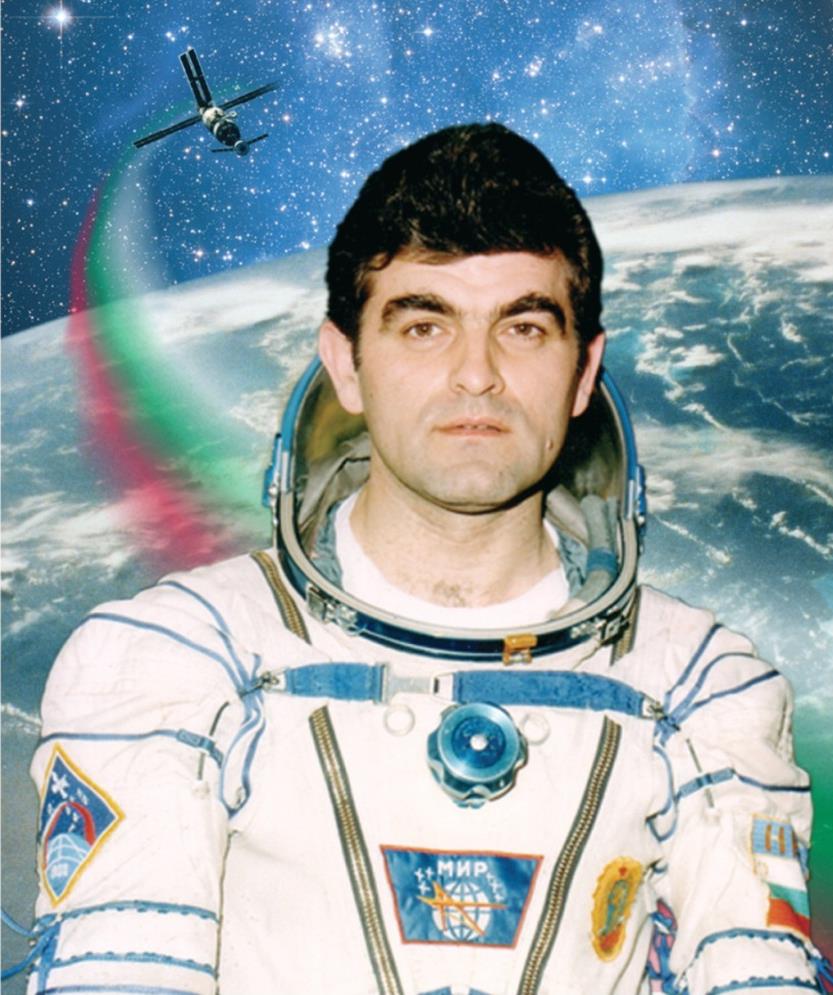Aleksandr Panayotov Aleksandrov
Bulgarian - (SRI-BAS)
Retired
Date of Birth: Dec. 1, 1951
Age: 74
Aleksandrov was born in Omurtag, Bulgaria on December 1, 1951. He graduated from the Bulgarian Air Force Academy in 1974 and obtained a degree in technical sciences in 1983. In the Bulgarian Air Force, Aleksandrov rose to the rank of lieutenant colonel. On June 7, 1988, Aleksandrov launched aboard TM-5 as a Research Cosmonaut along with mission commander Anatoly Solovyev and Viktor Savinykh. Upon arriving at Mir, Aleksandrov became the first Bulgarian to reach a Soviet space station, as the Soyuz 33 mission carrying Georgi Ivanov failed to reach the Salyut 6 space station. On June 17, Aleksandrov returned aboard Soyuz TM-4 along with his fellow crew members. He, along with his crew-mates, spent just under 10 days in space.
Soyuz-U2 | Soyuz TM-4
Soviet Space Program | RussiaBaikonur Cosmodrome, Republic of Kazakhstan
Dec. 21, 1987, 11:18 a.m.
Status: Success
Mission:
Soyuz TM-4 was the fourth mission to Mir space station. The mission began on December 21, 1987, 11:18:03 UTC, launching Commander Vladimir Titov, Flight Engineer Musa Manarov and Research Cosmonaut Anatoli Levchenko into orbit. They docked with Mir two days later. During their stay there, crew carried out over 2000 various experiments, performed two EVAs. They were visited by Soyuz TM-5 and Soyuz TM-6 crews. Vladimir Levchenko spent only a week on the station, while other two members of the crew stayed for a long duration mission. They returned on a Soyuz TM-6 spacecraft, landing safely back on Earth on December 21, 1988, 09:57:00 UTC.
Low Earth OrbitSoyuz-U2 | Soyuz TM-5
Soviet Space Program | RussiaBaikonur Cosmodrome, Republic of Kazakhstan
June 7, 1988, 2:03 p.m.
Status: Success
Mission:
Soyuz TM-5 was the fifth mission to Mir space station. The mission began on June 7, 1988, 14:03:13 UTC, launching Commander Anatoly Solovyev, Flight Engineer Viktor Savinykh and Research Cosmonaut Aleksandr Aleksandrov into orbit. They docked with Mir two days later, meeting with the long-duration resident crew. During their 7-day stay there, cosmonauts carried out scientific experiments. They returned on a Soyuz TM-4 spacecraft, landing safely back on Earth on June 17, 1988, 10:12:32 UTC.
Low Earth OrbitThe Bulgarian Space Agency has put two Bulgarians onto the ISS in tandem with the Russian Space Agency. Their involvement in space began with the Interkosmos program that helped Communist Bloc countries get access to Soviet space technology. They contributed cosmonauts for a training class, two of which flew aboard the ISS.
Long March 3B/E
Fengyun-4C
Launch Complex 2 (LC-2) - Xichang Satellite Launch Center, People's Republic of ChinaChina's geostationary meteorological satellite program FY-4 (Feng Yun 4) is the second generation of chinese geostationary meteorological satellites.
Long March 8A
SatNet LEO Group 17
Commercial LC-1 - Wenchang Space Launch Site, People's Republic of ChinaA batch of 9 Low Earth Orbit communication satellites for the Chinese state owned SatNet constellation operated by the China Satellite Network Group.…
Soyuz 2.1a
Obzor-R No.1
43/4 (43R) - Plesetsk Cosmodrome, Russian FederationNote: Assignment of payloads to this launch is uncertain. The Russian Obzor-R satellite is a planned X-band radar earth observation satellite desi…
LVM-3 (GSLV Mk III)
BlueBird Block 2 #1
Satish Dhawan Space Centre Second Launch Pad - Satish Dhawan Space Centre, IndiaAST SpaceMobile’s Block 2 BlueBird satellites are designed to deliver up to 10 times the bandwidth capacity of the BlueBird Block 1 satellites, requi…
Long March 12A
Demo Flight
Long March 12A Pad - Jiuquan Satellite Launch Center, People's Republic of ChinaFirst test launch of CASC/SAST’s Long March 12A rocket, with a dummy payload. The rocket’s 1st stage attempted to land on a landing pad about 300 km …



